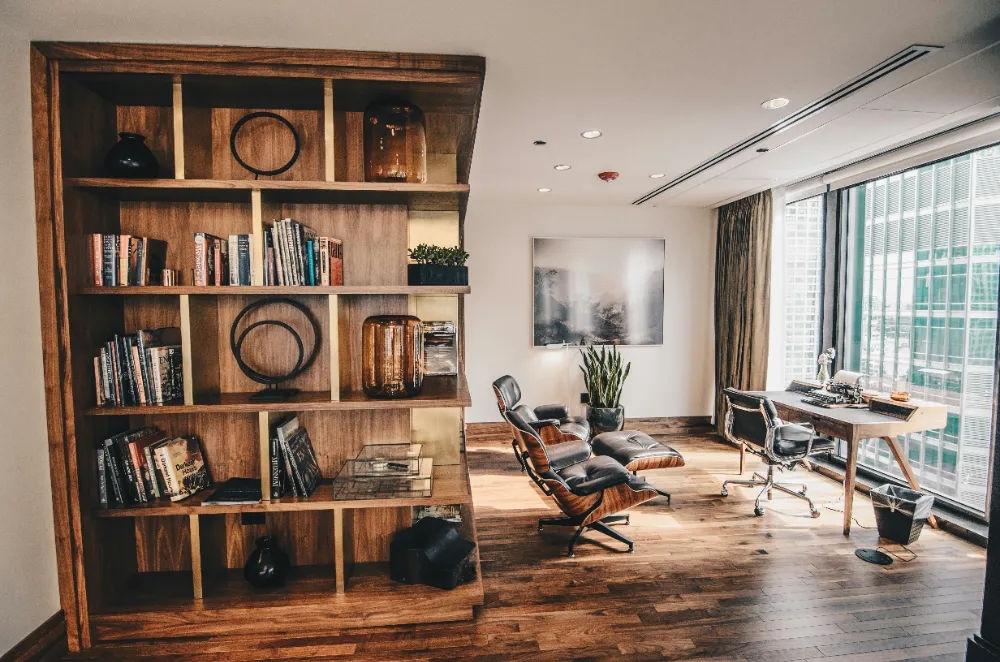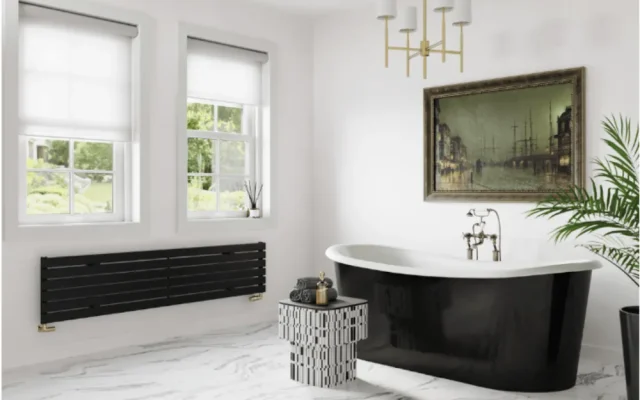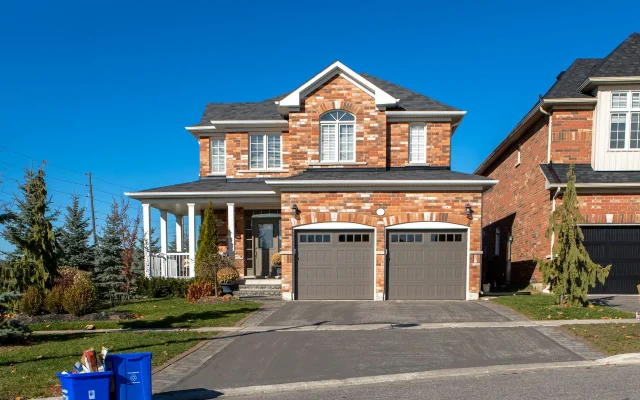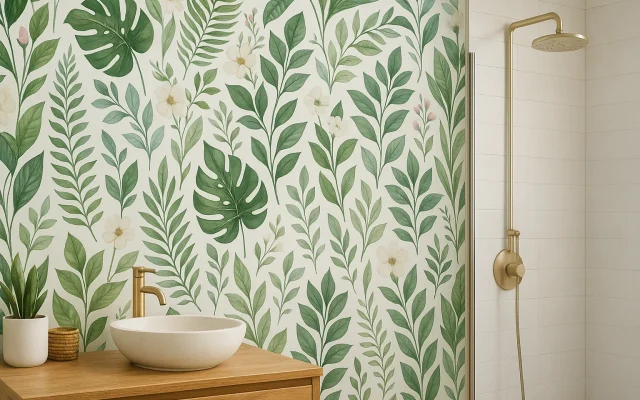Ever looked at your living room and thought, “Why does this also feel like my office, my gym, and my Zoom background?” You’re not alone. Over the past few years, the line between residential and commercial spaces has blurred faster than a coffee order during a morning rush. What started as a makeshift home office during lockdown has turned into a long-term lifestyle. And as a result, how we think about space and what we expect from it has changed completely.
People used to talk about aesthetics like they were the cherry on top. Now, they’re baked right into the blueprint. Design is no longer just about beauty. It’s about how things work. The world has shifted toward practicality, flexibility, and purpose. If a space doesn’t serve multiple needs, it quickly becomes irrelevant. And when a room does work well? That’s when it shines.
In this blog, we will share how design choices are being shaped by real-life demands, why practical features are trending in both homes and offices, and what it means when fashion follows function instead of the other way around.
Comfort is no longer negotiable
One of the biggest takeaways from the work-from-home era is that people perform better when they feel better. That’s led to a surge in ergonomic furniture, climate control upgrades, and noise-reducing design elements. Whether you’re at home or at the office, your environment now has a direct line to your well-being.
That’s where systems like lighting and HVAC come in. In a corporate setting, nobody wants to pitch a proposal while sweating under flickering fluorescent lights. And at home, you shouldn’t need three blankets in July because the AC’s throwing a tantrum. Building managers are investing in reliable commercial HVAC services to maintain comfort levels across large properties. Temperature control, air quality, and ventilation are no longer considered behind-the-scenes features. They’re part of the experience.
Natural lighting, indoor air quality, and adjustable furniture are no longer just perks. They’re expectations. And the companies or homeowners who ignore them do so at their own risk. The pandemic made everyone more sensitive to their surroundings. Now, people are less willing to tolerate environments that make them uncomfortable, distracted, or flat-out sick.
Minimalism had its moment. Now, it’s about personalization
For years, minimalism reigned supreme. White walls. Bare counters. Furniture so geometric it looked uncomfortable just sitting there. But times have changed. People want personality back. They want to see their lives reflected in their spaces, whether they’re at home or at work.
The rise of remote work has created a need for spaces that feel human. Cold, cookie-cutter interiors no longer cut it. People want color, texture, and warmth. Art that sparks joy. Chairs that look like they belong in an actual living room. Even in corporate offices, there’s a move toward softer aesthetics think natural materials, warm lighting, and relaxed layouts.
But don’t confuse personalization with clutter. This isn’t a return to the chaotic cubicle era. It’s a thoughtful layering of elements that reflect individuality while still keeping things functional. In a residential space, it could mean creating a gallery wall or adding vintage decor that tells a story. In an office, it might mean letting employees choose from a palette of desk setups or decorate their workspace within a theme.
One trend driving this shift is biophilic design bringing elements of nature indoors. From real plants to natural wood finishes and water features, the goal is to create calm, healthy spaces that foster creativity. When people feel emotionally connected to a space, they tend to respect and use it more thoughtfully.
Tech should blend in, not take over
We’re living in the age of smart everything. Smart lights. Smart fridges. And smart desks, even. But while tech has become a staple of modern design, the goal now is integration not domination. If you walk into a room and it feels like you’re inside a server rack, something’s gone wrong.
Designers are working harder to hide cords, embed tech into furniture, and create spaces that feel natural despite the presence of digital features. In homes, this looks like speakers built into shelves or smart lighting controlled by voice but designed to look like regular lamps. In offices, it means sleek conference setups with cameras, microphones, and displays that disappear when not in use.
One trend that’s gaining traction is “invisible tech.” This refers to technology that supports function without drawing attention to itself. Think charging pads built into tabletops or sensors that adjust lighting based on occupancy. These innovations create smoother, more responsive environments without turning every room into a showroom for gadgets.
People want ease, not clutter. A tech-rich space should make life simpler, not louder. It’s about adding intelligence to the environment in a way that complements design rather than hijacking it.
Flexibility is the new luxury
Luxury used to mean high-end finishes and big square footage. Now, it means having a space that works with you, not against you. People value environments that can be rearranged, repurposed, and resized as needed.
In homes, that means sliding doors, room dividers, modular furniture, and convertible guest rooms. In offices, it looks like mobile whiteboards, unassigned desks, and furniture on wheels. Flexibility allows people to adapt without friction.
It also acknowledges that change is constant. Whether it’s a new baby, a business expansion, or a global shift in how people work, your space shouldn’t fight your lifestyle. It should support it.
This demand for flexibility has also led to new hybrid concepts. Apartment buildings are now including coworking lounges. Offices are adding quiet zones and nap pods. Designers are no longer separating “work” and “home” by strict borders. Instead, they’re asking, “How can one place meet many needs?”
What it all means for the future of design
We’ve officially entered an era where style and purpose are inseparable. The best-designed spaces today aren’t just visually appealing. They’re smart, adaptable, and deeply human. They reflect how people actually live and work not some idealized version of it.
The lesson? Function is fashion now. A stunning space that doesn’t support your daily routine is just expensive decoration. But a well-designed, flexible, comfortable space? That’s where people thrive.
As we continue to blur the lines between home and office, the smartest design choices will be the ones that serve both. So whether you’re picking a desk chair, renovating a breakroom, or planning a kitchen update, ask yourself one thing: does it work as good as it looks?
If it does, congratulations you’re already designing for the future.
FAQs
Because people now expect spaces to support comfort, productivity, and adaptability in everyday life.
It means design choices must work well first, and look good second purpose drives style.
It increased demand for ergonomic furniture, adaptable layouts, and multifunctional rooms.
Because comfort directly impacts focus, well-being, and long-term productivity.
It integrates natural elements like plants and wood to create calming, healthy spaces.
Reliable climate control and quality lighting are now considered essential, not optional.
People want spaces that feel personal, warm, and expressive rather than cold or sparse.
Technology that blends seamlessly into the environment, supporting function without visual clutter.
Flexibility allows rooms to adapt to different needs working, relaxing, hosting, or collaborating.
Modular furniture, sliding partitions, integrated tech, and personalized décor all contribute.







